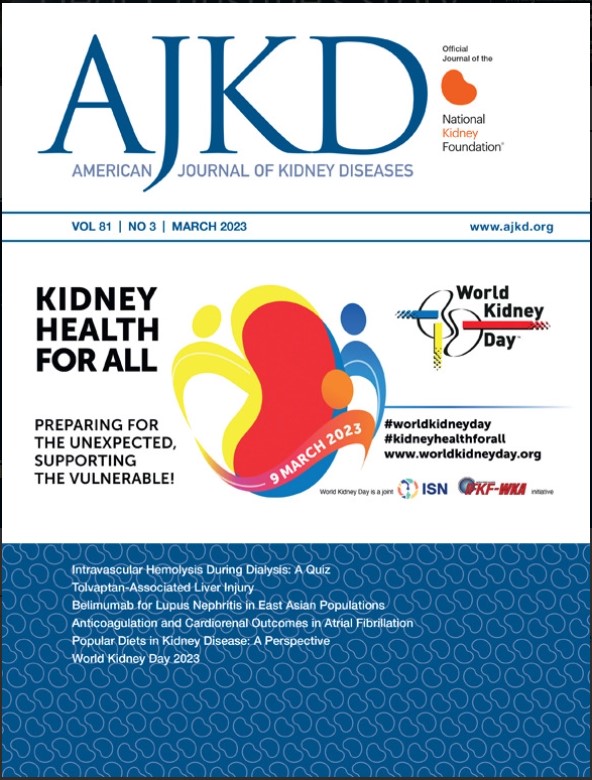血液透析血管通路:核心课程2025。
IF 9.4
1区 医学
Q1 UROLOGY & NEPHROLOGY
引用次数: 0
摘要
大多数需要替代疗法的肾衰竭患者在肾衰竭过程中需要血液透析的支持。提供血液透析需要可靠的血管通路。本核心课程回顾了血管通路的主要形式(动静脉瘘、动静脉移植物和中心静脉导管),以及血管通路的规划、准备、创建、使用和维护,每个患者需要一个P-L-A-N(患者ESKD生命计划,然后是通道需求)。终末期肾病患者生活计划侧重于肾脏替代方式的策略,而获取需求是相应的透析获取和管理计划。通道需求包括容器保存计划、创建计划、突发事件(并发症)计划和通道继承计划。狭窄和血栓形成是动静脉通道的常见问题,功能障碍和感染是中心静脉导管的常见问题。未被充分认识和报道但可能危及生命的情况包括动静脉通路破裂和高输出量心力衰竭。这些和其他血管通路问题的有效管理需要协调多学科的努力,以患者为中心,同时保持血管通路。本文章由计算机程序翻译,如有差异,请以英文原文为准。
Hemodialysis Vascular Access: Core Curriculum 2025
The majority of patients with kidney failure requiring replacement therapy will need the support of hemodialysis during their journey with kidney failure. A reliable functioning vascular access is required to provide hemodialysis. This Core Curriculum reviews the major forms of vascular access (arteriovenous fistula, arteriovenous graft, and central venous catheter) as well as the planning, preparation, creation, use, and maintenance of vascular access, requiring a P-L-A-N (Patient ESKD Life-Plan first then Access Needs) for each patient. The end-stage kidney disease Patient Life-Plan focuses on a strategy for kidney replacement modalities, while the Access Needs are the corresponding dialysis access(es) and management plans. The Access Needs include a vessel preservation plan, creation plan, contingency (complications) plan, and access succession plan. Stenosis and thrombosis are common problems with arteriovenous accesses, and dysfunction and infection are common problems with central venous catheters. Underrecognized and underreported but potentially life-threatening situations include arteriovenous access rupture and high-output cardiac failure. Effective management of these and other vascular access problems requires a coordinated multidisciplinary effort that is patient centered while preserving vascular access.
求助全文
通过发布文献求助,成功后即可免费获取论文全文。
去求助
来源期刊

American Journal of Kidney Diseases
医学-泌尿学与肾脏学
CiteScore
20.40
自引率
2.30%
发文量
732
审稿时长
3-8 weeks
期刊介绍:
The American Journal of Kidney Diseases (AJKD), the National Kidney Foundation's official journal, is globally recognized for its leadership in clinical nephrology content. Monthly, AJKD publishes original investigations on kidney diseases, hypertension, dialysis therapies, and kidney transplantation. Rigorous peer-review, statistical scrutiny, and a structured format characterize the publication process. Each issue includes case reports unveiling new diseases and potential therapeutic strategies.
 求助内容:
求助内容: 应助结果提醒方式:
应助结果提醒方式:


